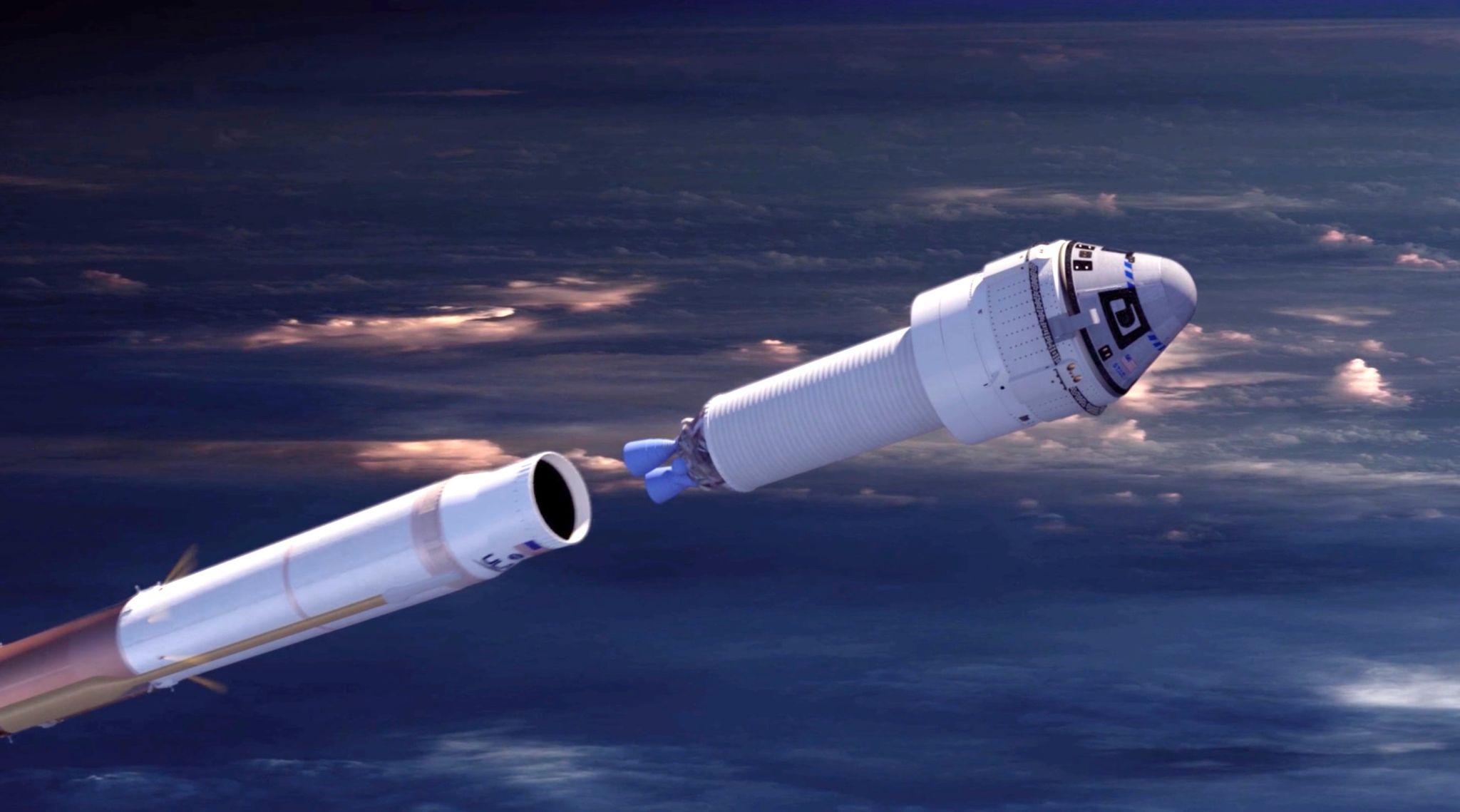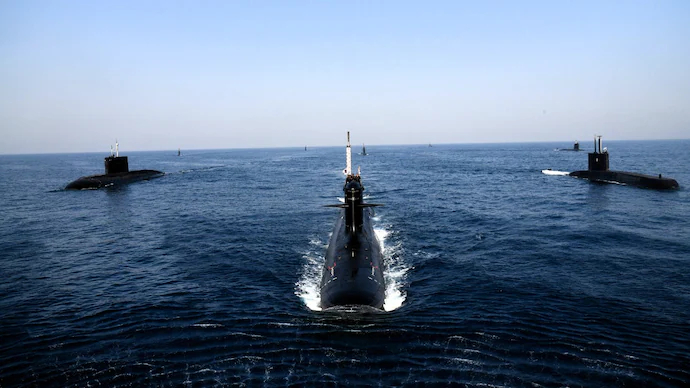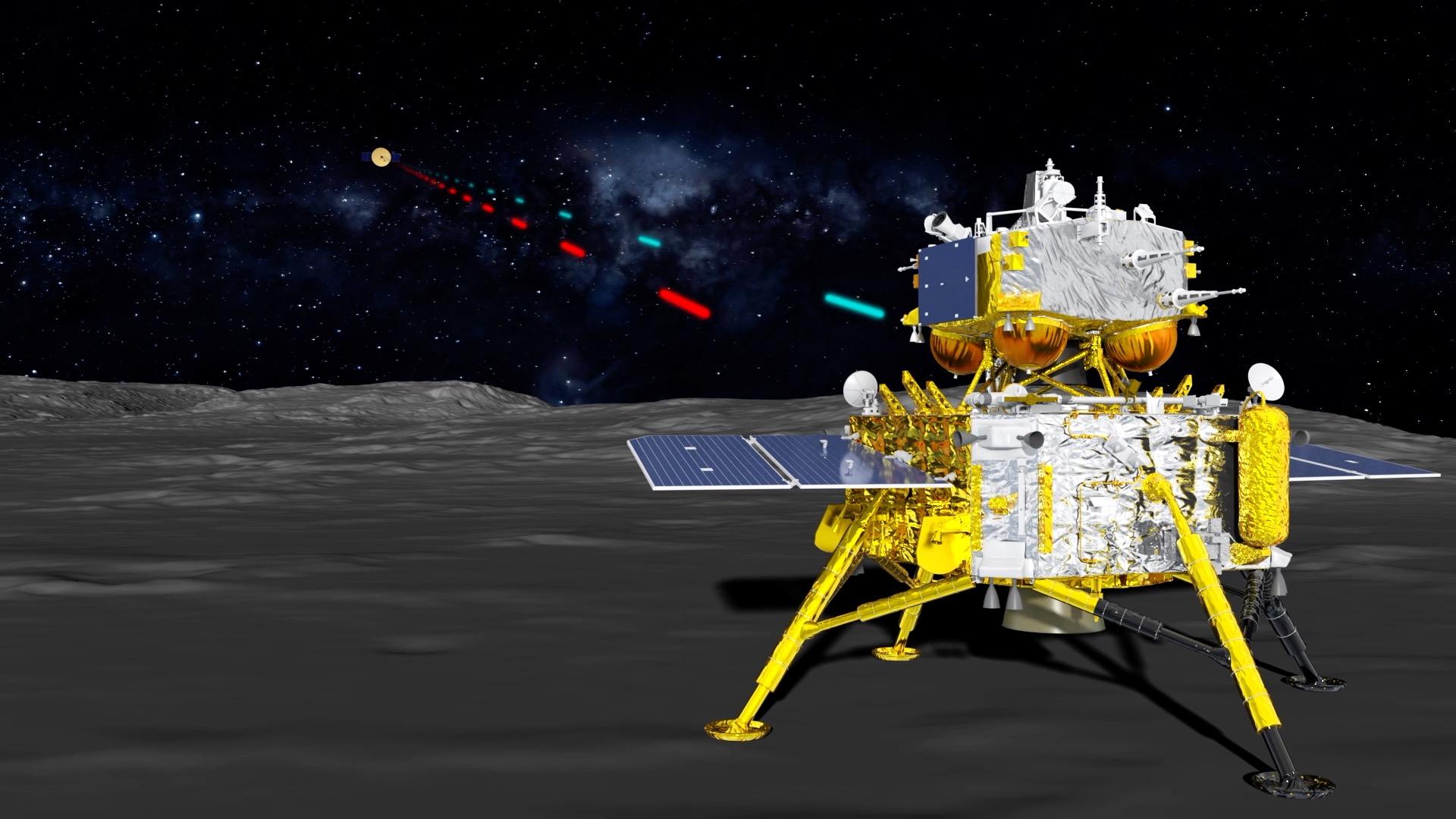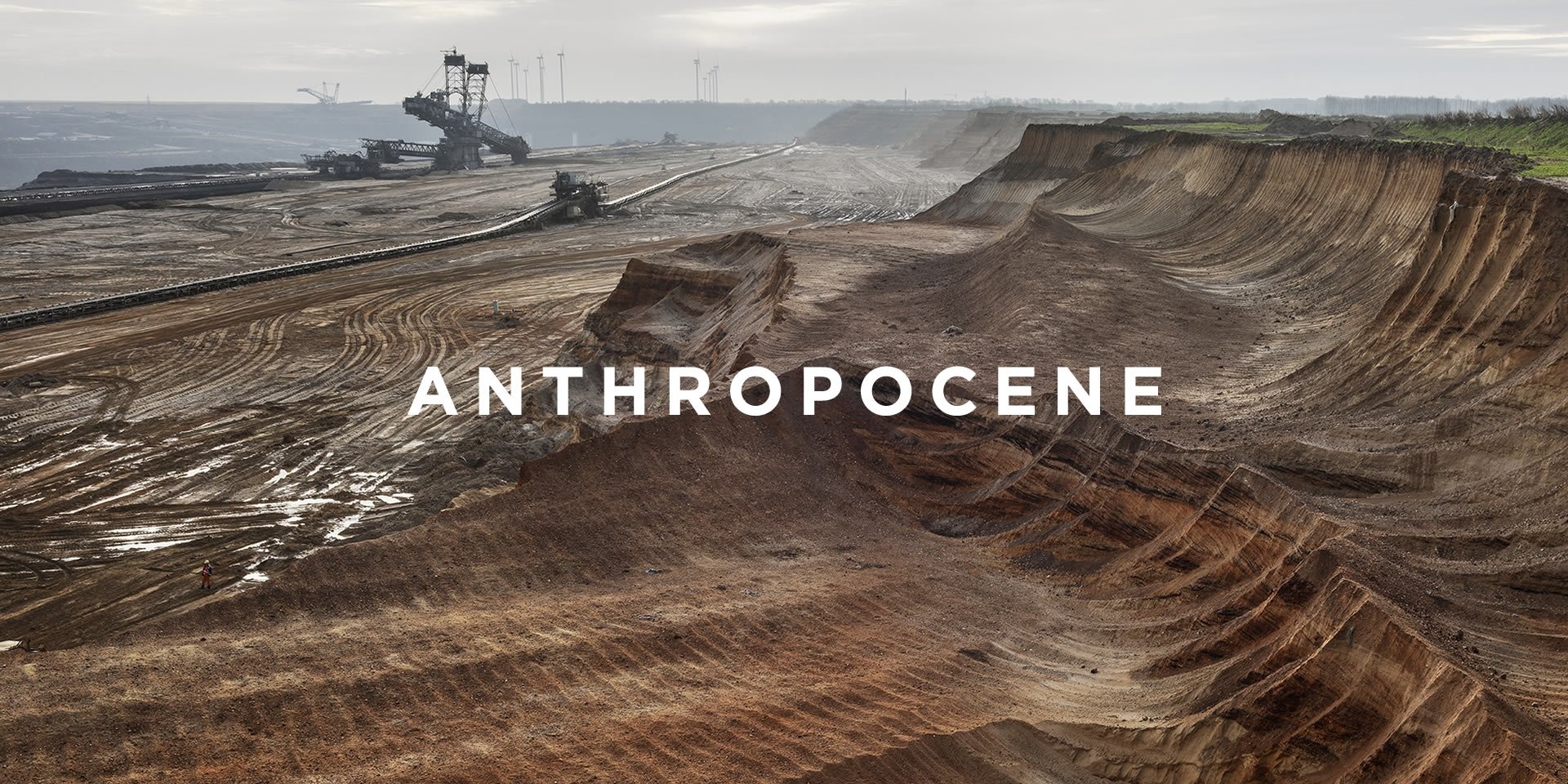Boeing Starliner

- 06 May 2024
Why is it in the News?
Boeing’s Starliner spacecraft, carrying two NASA astronauts, will be launched by an Atlas V rocket from the Kennedy Space Center in Cape Canaveral, Florida, to the International Space Station (ISS).
What is Boeing’s Starliner?
- Starliner, a reusable spacecraft, has a pusher abort system.
- This allows the crew to safely escape throughout the launch and the ascent phases of the mission.
- In addition to being software-driven, the Starliner has wireless internet that will help with “crew communication, entertainment and docking with the International Space Station”
- The spacecraft can fly and course-correct on its own.
- It operates like advanced self-driving cars, with features similar to sophisticated cruise control and hands-free driving, allowing astronauts to simply enjoy the ride without intervention.
- It also allows astronauts to choose their level of control.
- Consisting of a crew capsule and a service module, the Starliner aims to revolutionize space travel with its advanced features and capabilities.
Crew Capsule:
- The crew capsule is the heart of the spacecraft, providing housing for astronauts during their journey.
- Designed to withstand the rigours of reentry, the capsule ensures a safe return to Earth for its occupants.
Service Module:
- The service module is equipped with essential systems for astronaut survival, such as air and temperature control, water supply, and sanitation facilities.
- Additionally, it contains the necessary engines and fuel required for manoeuvring the spacecraft in space.
- This module is not reusable and is designed for single use.
Starliner Specifications:
- With a width of over 4 meters, the Starliner can accommodate up to seven astronauts at once.
- The spacecraft boasts a unique weldless structure, making it both durable and reusable, with a potential for up to 10 missions and a six-month turnaround time between launches.
- Furthermore, the Starliner incorporates modern technologies like wireless internet and tablet interfaces for enhanced crew interaction.
Launch Vehicle:
- The Starliner is compatible with the Atlas V rocket, operated by United Launch Alliance (ULA), a joint venture between Boeing and Lockheed Martin.
- This collaboration ensures the seamless integration of the spacecraft and launch vehicle, optimizing mission success.
Why is the mission significant?
- In 2014, NASA selected Boeing and SpaceX to develop spacecraft for transporting astronauts to the International Space Station (ISS).
- While SpaceX has already conducted multiple successful missions with its Dragon crew capsule, the Starliner's success would mark the first time the United States has two domestically produced spacecraft capable of carrying astronauts to space.
- Once operational, Boeing and SpaceX will alternate missions to the ISS, with each crew's expedition lasting up to six months.
- This partnership will continue until the ISS is decommissioned in the next decade.
Air Independent Propulsion (AIP) Technology

- 06 May 2024
Why is it in the News?
The Indian Navy has initiated trials to modernize its conventional submarine fleet by issuing a Rs 60,000 crore tender for the acquisition of highly advanced submarines equipped with Air Independent Propulsion (AIP) technology.
What is an Air Independent Propulsion (AIP)?
- Air Independent Propulsion (AIP) is a propulsion system used in submarines that allows them to operate underwater for extended periods without the need to surface or snorkel for air.
- Unlike traditional diesel-electric submarines, which rely on diesel engines for surface propulsion and battery-powered electric motors for submerged propulsion, AIP-equipped submarines use a supplementary propulsion system that generates power independently of atmospheric oxygen.
- AIP systems typically employ technologies such as fuel cells, closed-cycle diesel engines, Stirling engines, or other innovative methods to generate electricity or mechanical power for propulsion while submerged.
- Closed Cycle Diesel Engines: These engines use stored liquid oxygen and an inert gas, such as argon, to run the diesel engine while submerged.
- Closed Cycle Steam Turbines: These systems generate steam using stored liquid oxygen and a fuel source, such as diesel or bioethanol, to power a turbine and produce electricity.
- Stirling Cycle Engines: This technology utilizes a closed-cycle heat engine to generate power using a temperature difference between a hot and cold source.
- Fuel Cells: These devices convert chemical energy from a fuel, such as hydrogen, and an oxidizing agent, like stored liquid oxygen, into electrical energy through an electrochemical reaction.
- These systems produce minimal noise and exhaust, allowing submarines to operate quietly and stealthily underwater, making them less vulnerable to detection by sonar and other detection systems.
- The implementation of AIP technology significantly enhances the stealth and endurance capabilities of submarines, enabling them to conduct longer-duration covert missions and remain submerged for extended periods, thereby enhancing their overall operational effectiveness.
- The Defence Research and Development Organisation (DRDO) is pioneering fuel cell-based AIP systems, unique for their hydrogen generation capabilities.
- Developed by the Naval Materials Research Laboratory (NMRL) of DRDO, these systems offer flexibility in operation modes to meet diverse user requirements.
China’s Chang’e-6 Mission

- 06 May 2024
Why is it in the News?
Recently, China launched its second mission to the far side of the Moon. If successful, it will be the world’s first mission to bring back samples from the part of the Moon that the Earth never gets to see.
What is Chang’e-6 Mission?
- China's Chang'e-6 spacecraft launched recently, on a mission to collect samples from the far side of the Moon.
- The mission aims to grab samples containing material ejected from the lunar mantle and thus provide insight into the history of the Moon, Earth, and Solar System.
- It is a 53-day-long mission. After reaching the Moon’s orbit, the mission’s orbiter will circle the natural satellite while its lander will descend into the 2,500-kilometre-wide South Pole-Aitken basin on the lunar surface.
- The impact that created the basin, among the largest in the history of the solar system, is thought to have dug up material from the lunar mantle.
- If that material can be retrieved, scientists can learn more about the history of the Moon’s insides.
- After collecting samples through scooping and drilling, the lander will launch an ascent vehicle, which will transfer the samples to the orbiter’s service module.
- This module will then return to the Earth.
- China is the only country to achieve a soft landing on the far side of the Moon.
- In 2019, its Chang’e-4 mission landed on the region and explored the Moon’s Von Karman crater with the help of a rover.
Why is the Far Side of the Moon Important?
- The Moon’s far side is often referred to as the dark side because it cannot be seen from the Earth, not because it does not catch the Sun’s rays.
- The Moon is tidally locked with the Earth and therefore, we see only one side of the Moon, also known as the near side.
- The far side has been under the spotlight in recent years as it is very different from the near side.
- It has a thicker crust, more craters and fewer maria, or plains where lava once flowed.
- Examining the samples from the far side can help scientists solve mysteries about the origin and evolution of the Moon — till now, scientists have only been able to analyse samples from the near side.
- The far-side samples can also give answers to the longstanding question: why is it different from the near side?
- Going to the far side, getting samples and doing different kinds of geophysical measurements is really important to figuring out this really long, long-standing mystery.
Anthropocene Epoch

- 06 May 2024
Why is it in the News?
For digital democracies, it is imperative to recognise the potential for self-inflicted social impoverishment by overlooking these long-term challenges of the Anthropocene.
What is an Epoch?
- Epochs form part of the Earth’s official timeline.
- All 4.6 billion years are split into Eons, Eras, Periods, Epochs and Ages - as designated by the International Commission on Stratigraphy.
- The Earth’s current epoch, the Holocene, started at the end of the last ice age, around 12,000 years ago.
- In comparison, the current Eon (in British English Aeon) is the Phanerozoic, which started some 540 million years ago.
What is the Anthropocene Epoch?
- The Anthropocene Epoch is an unofficial unit of geologic time, used to describe the most recent period in Earth’s history when human activity started to have a significant impact on the planet’s climate and ecosystems.
- The term, coined by biologist Eugene Stormer and chemist Paul Crutzen in 2000, combines the Greek words "anthropo" (man) and "cene" (new) to signify the dawn of a new human-centric era.
- Various phenomena characterize this proposed epoch, including global warming, sea-level rise, ocean acidification, mass-scale soil erosion, deadly heat waves, and the deterioration of the biosphere.
- These environmental changes highlight the unprecedented influence of human actions on the Earth's systems.
What is the Geological Time Scale?
- The geological time scale is based on the geological rock record, which includes erosion, mountain building and other geological events.
- Over hundreds to thousands of millions of years, continents, oceans and mountain ranges have moved vast distances both vertically and horizontally.
- For example, areas that were once deep oceans hundreds of millions of years ago are now mountainous desert regions.
- To understand the context of the Anthropocene Epoch, it is essential to explore the geological time scale.
- From longest to shortest, these divisions are called eons, eras, periods, epochs, and ages.
- The study of the correlation between strata and fossils is known as stratigraphy.
Current Epoch and Debate:
- Officially, the current epoch is the Holocene, which started 11,700 years ago after the last major ice age.
- However, there is ongoing debate within the scientific community regarding the distinction between the Holocene and the Anthropocene.
- The International Union of Geological Sciences (IUGS) has yet to formally adopt the term Anthropocene as an official epoch.
- The critical question the IUGS needs to address is whether human influence has significantly altered the Earth's systems to the extent that it is reflected in the rock strata.
- As the debate continues, the Anthropocene Epoch serves as a reminder of the profound impact of human activity on the planet and the urgent need to address environmental challenges for the sake of Earth's future.
GOLDENE

- 06 May 2024
Why is it in the News?
For the first time, researchers have created a free-standing sheet of gold (goldene) that is only one atom thick.
What Is Goldene?
- Goldene is an innovative, free-standing 2D metal with a thickness of just one atom.
- Created through a unique process, Goldene offers a wide range of potential applications in various industries, particularly in electronics and catalysis.
How is it created?
- Scientists first encapsulate an atomic monolayer of silicon between layers of titanium carbide.
- Gold is deposited on this structure, allowing the gold atoms to diffuse and replace the silicon atoms, creating a monolayer of trapped gold atoms.
- Using Murakami's reagent and a Japanese technique employed in forging katanas and high-quality knives, the titanium carbide layers are etched away, leaving a free-standing, one-atom-thick layer of gold.
Dimensions:
- Goldene sheets are approximately 100 nanometres thick, roughly 400 times thinner than the most delicate commercially available gold leaf.
Applications: Goldene's unique properties offer potential applications in various sectors:
- Electronics industry: Goldene's thinness and conductivity can enhance electrical components and circuitry.
- Carbon dioxide conversion: It can potentially aid in transforming carbon dioxide into useful products.
- Hydrogen-generating catalysis: Goldene could be utilized to efficiently produce hydrogen.
- Selective production of value-added chemicals: The material's properties enable the selective generation of chemicals for specific applications.
- Hydrogen production: It can contribute to the clean production of hydrogen.
- Water purification: Goldene could be implemented in water treatment technologies.
Significance:
- Goldene is an economically viable alternative to conventional, thicker gold structures, making it an appealing option for catalytic applications.
- Its unique characteristics position Goldene as a potentially revolutionary material for various industries.
